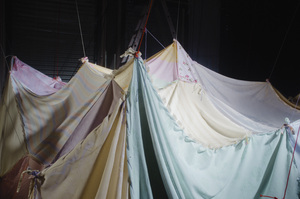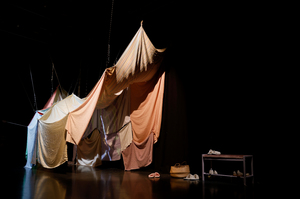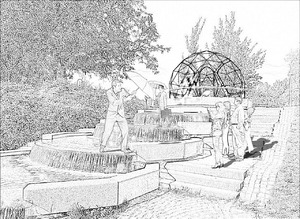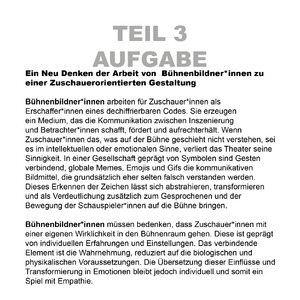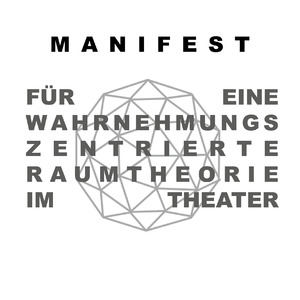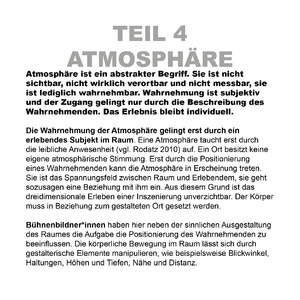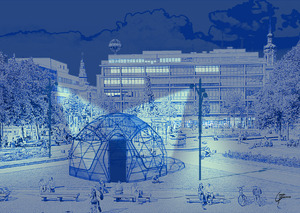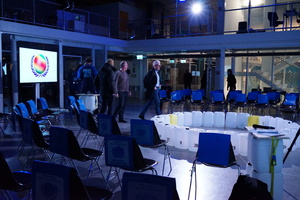Constanze Fischbeck
| Name | Constanze Fischbeck |
509 Inhalte
- Seite 1 von 43
It's okay now
- Titel
- It's okay now
- Autor/in
- Schlagworte
- Titel
- It's okay now
- Urheberrechtshinweis
- © Isabelle Konrad, Gloria Müller
- Freigabe Nutzung HfG
- Medienersteller/in
- Beziehung/Funktion
- Projektleiter/in
- Semester
- Studiengang
- Typ der Abschlussarbeit
- Importiert am
- 10.10.2024
- Übergeordnete Sets
- 1
It's okay now
- Titel
- It's okay now
- Autor/in
- Schlagworte
- Datierung
- 01.10.2024 - 04.10.2024
- Titel
- It's okay now
- Titel (en)
- It's okay now
- Urheberrechtshinweis
- © Isabelle Konrad, Gloria Müller
- Freigabe Nutzung HfG
- Medienersteller/in
- Beziehung/Funktion
- Projektleiter/in
- Semester
- Studiengang
- Typ der Abschlussarbeit
- Importiert am
- 26.05.2025
- Übergeordnete Sets
- 1
It's okay now
- Titel
- It's okay now
- Autor/in
- Titel
- It's okay now
- Titel (en)
- It's okay now
- Urheberrechtshinweis
- © Isabelle Konrad, Gloria Müller
- Freigabe Nutzung HfG
- Medienersteller/in
- Beziehung/Funktion
- Projektleiter/in
- Semester
- Studiengang
- Typ der Abschlussarbeit
- Importiert am
- 26.05.2025
- Übergeordnete Sets
- 1
It's okay now
- Titel
- It's okay now
- Autor/in
- Titel
- It's okay now
- Titel (en)
- It's okay now
- Urheberrechtshinweis
- © Isabelle Konrad, Gloria Müller
- Freigabe Nutzung HfG
- Medienersteller/in
- Beziehung/Funktion
- Projektleiter/in
- Semester
- Studiengang
- Typ der Abschlussarbeit
- Importiert am
- 26.05.2025
- Übergeordnete Sets
- 1
It's okay now
- Titel
- It's okay now
- Autor/in
- Schlagworte
- Datierung
- 1.10.2024
- Titel
- It's okay now
- Titel (en)
- It's okay now
- Urheberrechtshinweis
- © Isabelle Konrad, Gloria Müller
- Freigabe Nutzung HfG
- Medienersteller/in
- Beziehung/Funktion
- Projektleiter/in
- Semester
- Studiengang
- Typ der Abschlussarbeit
- Importiert am
- 25.05.2025
- Übergeordnete Sets
- 1
Karlsruhe
- Titel
- Karlsruhe
- Autor/in
- Kategorie
- Schlagworte
- Datierung
- Mai 2021
- Ort: Institution
- Ort
- Großes Studio
- Stadt
- Land
- Titel
- Karlsruhe
- Urheberrechtshinweis
- © Carina Fenderich
- Rechtsschutz/Lizenz
- Freigabe Nutzung HfG
- Medienersteller/in
- Beziehung/Funktion
- Projektleiter/in
- Semester
- Studiengang
- Typ der Abschlussarbeit
- Importiert am
- 14.06.2024
- Übergeordnete Sets
- 1
Leaflet / Faltblatt
- Titel
- Leaflet / Faltblatt
- Autor/in
- Beschreibung (de)
- Die Rauminstallation “Elastic Kin” zeigt eine Gruppe von Textilobjekten - Gefüge -, die aus weggeworfenen Kleidungsstücken bestehen. Sie existieren sowohl als Individuen als auch als Gruppe. Die Kleidungsstücke, die in den Straße von K. gefunden wurden und von Anderen in anderen Kontext hergestellt worden sind, kehren ihren ursprünglichen Zweck um, indem sie zu eigenen Körpern werden, die unabhängig von menschlichen Körpern sind. Jede Oberfläche ist wie eine geheime Landkarte, die Spuren anonymer Hände enthält, die an den Textilien gearbeitet haben.
Der Sound der Installation ist ein Echo - fast verschwundener, kollektiver Erinnerungen an vergangene Momente und Orte.
“Elastic Kin” versucht, eine weit verbreitete Verwandtschaft darzustellen, die durch unsichtbare, lose und elastische Fäden imaginiert wird, die ein internationales System von Lieferketten, Arbeiter*Innen und Konsument*Innen, Trendprognosen und unvorhersehbarem Zeitgeist, Massenproduktion und meditativer Handarbeit abbilden. Welche Spuren dieser Kontexte enthalten die Kleidungsstücke?
Das Video zeigt eine performative Intervention im öffentlichen Raum. Es zeigt die Gefüge, die eine neue Existenz außerhalb ihrer Produktions- und Vermarktungskontexte führen: Sie kehren in ein Einkaufszentrum zurück, animiert von den Menschen, die sie einst bekleideten.
- Die Rauminstallation “Elastic Kin” zeigt eine Gruppe von Textilobjekten - Gefüge -, die aus weggeworfenen Kleidungsstücken bestehen. Sie existieren sowohl als Individuen als auch als Gruppe. Die Kleidungsstücke, die in den Straße von K. gefunden wurden und von Anderen in anderen Kontext hergestellt worden sind, kehren ihren ursprünglichen Zweck um, indem sie zu eigenen Körpern werden, die unabhängig von menschlichen Körpern sind. Jede Oberfläche ist wie eine geheime Landkarte, die Spuren anonymer Hände enthält, die an den Textilien gearbeitet haben.
- Beschreibung (en)
- The spatial installation “Elastic Kin” shows a group of textile objects – Gefüge – that were assembled from discarded and abandoned garments. They exist as individuals as well as a kin. Assembled from used garments, found in the streets of K., produced by others in other contexts, they invert their original purpose by becoming bodies of their own, no longer dependent on being activated by a human body. The surface of every Gefüge is like a secret map, containing traces of anonymous hands working on them.
The sound in the installation is an echo of almost vanished collective memories of past moments and places. “Elastic Kin” attempts to depict a widespread kinship, that is imagined through invisible, loose and elastic threads mapping an international system of supply chains, workers and consumers, trend forecast and unpredictable zeitgeist, mass production and meditative handcraft. Which traces of these contexts do the garments contain?
The video shows a performative intervention in pub- lic space. It shows the Gefüge leading a new existence outside their production and marketing contexts: They return to the shopping mall, animated by the people, they once used to dress.
- The spatial installation “Elastic Kin” shows a group of textile objects – Gefüge – that were assembled from discarded and abandoned garments. They exist as individuals as well as a kin. Assembled from used garments, found in the streets of K., produced by others in other contexts, they invert their original purpose by becoming bodies of their own, no longer dependent on being activated by a human body. The surface of every Gefüge is like a secret map, containing traces of anonymous hands working on them.
- Typ des Projekts/Werks
- Schlagworte
- Datierung
- 18.10.2023
- Mitwirkende
- Dank an
- Sprache
- Untertitel (Film)
- Material
- Ort: Institution
- Stadt
- Land
- Titel
- Leaflet / Faltblatt
- Urheberrechtshinweis
- Corinne Riepert
- Rechtsschutz/Lizenz
- Projektleiter/in
- Semester
- Studiengang
- Typ der Abschlussarbeit
- Importiert am
- 02.11.2023
- Übergeordnete Sets
- 1
Manifest
- Titel
- Manifest
- Autor/in
- Kategorie
- Schlagworte
- Datierung
- Mai 2021
- Ort: Institution
- Ort
- Großes Studio
- Stadt
- Land
- Titel
- Manifest
- Titel (en)
- Manifest
- Urheberrechtshinweis
- © Carina Fenderich
- Rechtsschutz/Lizenz
- Freigabe Nutzung HfG
- Medienersteller/in
- Projektleiter/in
- Semester
- Studiengang
- Typ der Abschlussarbeit
- Importiert am
- 14.06.2024
- Übergeordnete Sets
- 1
Manifest
- Titel
- Manifest
- Autor/in
- Kategorie
- Schlagworte
- Datierung
- Mai 2021
- Ort: Institution
- Ort
- Großes Studio
- Stadt
- Land
- Titel
- Manifest
- Titel (en)
- Manifest
- Urheberrechtshinweis
- © Carina Fenderich
- Rechtsschutz/Lizenz
- Freigabe Nutzung HfG
- Medienersteller/in
- Projektleiter/in
- Semester
- Studiengang
- Typ der Abschlussarbeit
- Importiert am
- 14.06.2024
- Übergeordnete Sets
- 1
Manifest
- Titel
- Manifest
- Autor/in
- Kategorie
- Schlagworte
- Datierung
- Mai 2021
- Ort: Institution
- Ort
- Großes Studio
- Stadt
- Land
- Titel
- Manifest
- Titel (en)
- Manifest
- Urheberrechtshinweis
- © Carina Fenderich
- Rechtsschutz/Lizenz
- Freigabe Nutzung HfG
- Medienersteller/in
- Projektleiter/in
- Semester
- Studiengang
- Typ der Abschlussarbeit
- Importiert am
- 14.06.2024
- Übergeordnete Sets
- 1
Mannheim
- Titel
- Mannheim
- Autor/in
- Kategorie
- Schlagworte
- Datierung
- Mai 2021
- Ort: Institution
- Ort
- Großes Studio
- Stadt
- Land
- Titel
- Mannheim
- Urheberrechtshinweis
- © Carina Fenderich
- Rechtsschutz/Lizenz
- Freigabe Nutzung HfG
- Medienersteller/in
- Beziehung/Funktion
- Projektleiter/in
- Semester
- Studiengang
- Typ der Abschlussarbeit
- Importiert am
- 14.06.2024
- Übergeordnete Sets
- 1
Ministry for the Future, Episode 1
- Titel
- Ministry for the Future, Episode 1
- Autor/in
- Beschreibung (de)
- Ministry for the Future ist eine transdisziplinäre Produktion über mögliche Zukünfte im Angesicht der Klimakrise – und darüber, wie wir sie verhandeln, bevor sie eintreten. Inspiriert vom gleichnamigen Roman von Kim Stanley Robinson entwickelte sich ein groß angelegtes Kooperationsprojekt zwischen dem Theater Neumarkt, dem Collegium Helveticum Zürich und der Hochschule für Gestaltung Karlsruhe.
Ausgangspunkt ist ein spekulatives Szenario im Jahr 2034: Die Erde hat Kipppunkte erreicht, Regierungen reagieren, eine neue Institution wird gegründet – das Ministerium für die Zukunft. Innerhalb dieser Fiktion operiert die Produktion als diskursives Format, das sich fortlaufend mit der zentralen Frage auseinandersetzt: Welche Handlungsspielräume bleiben uns?
Das Projekt kombiniert künstlerische, wissenschaftliche und gestalterische Perspektiven zu einem Format zwischen Preenactment und realer Wissenschaftskommunikation. Herzstück ist ein mobiles Bühnenbild, das drängende forschungsbasierte Diskurse in eine begehbare, funktionale Infrastruktur übersetzt. Die Szenografie wurde konsequent durch Re- und Upcycling-Prozesse entwickelt. Sie folgt einer Haltung, die den Anforderungen ökologischer Krisen standhalten will – indem sie aus dem Material jener Krisen selbst hervorgeht. In vier thematisch fokussierten Episoden an vier verschiedenen Orten in Zürich wird der Raum selbst zum Instrument: eine spekulative Versammlung, eine temporäre Institution, ein Möglichkeitslabor.
Die Inszenierung bringt reale Wissenschaftler:innen, Performer:innen und Bürger:innen im Modus eines fiktionalen Ministeriums in Austausch – und mit ihnen die Fragen: Wie lässt sich Zukunft verhandeln, wenn sie längst begonnen hat? Was bedeutet Teilhabe, wenn die Katastrophe strukturell geworden ist? Und wie kann Raum für solche Aushandlungen heute aussehen?
- Ministry for the Future ist eine transdisziplinäre Produktion über mögliche Zukünfte im Angesicht der Klimakrise – und darüber, wie wir sie verhandeln, bevor sie eintreten. Inspiriert vom gleichnamigen Roman von Kim Stanley Robinson entwickelte sich ein groß angelegtes Kooperationsprojekt zwischen dem Theater Neumarkt, dem Collegium Helveticum Zürich und der Hochschule für Gestaltung Karlsruhe.
- Beschreibung (en)
- Ministry for the Future is a transdisciplinary production about possible futures in the face of the climate crisis—and about how we negotiate them before they arrive. Inspired by the novel of the same name by Kim Stanley Robinson, the project evolved into a large-scale collaboration between Theater Neumarkt, the Collegium Helveticum Zurich, and the Karlsruhe University of Arts and Design (HfG).
Its starting point is a speculative scenario set in the year 2034: the Earth has reached tipping points, governments are reacting, and a new institution is established—the Ministry for the Future. Within this fiction, the production functions as a discursive format that continuously engages with the central question: What room for action remains?
The project combines artistic, scientific, and design perspectives into a hybrid format somewhere between preenactment and real science communication. At its core is a mobile stage design that translates urgent, research-based discourses into an immersive, functional infrastructure. The scenography was developed entirely through re- and upcycling processes, guided by an attitude that seeks to meet the demands of ecological crises—by emerging from their very material. Across four thematically focused episodes in four different locations in Zurich, the space itself becomes an instrument: a speculative assembly, a temporary institution, a lab of possibilities.
The performance brings together real scientists, performers, and citizens within the framework of a fictional ministry—and with them, the questions: How can we negotiate the future when it has already begun? What does participation mean when catastrophe has become structural? And what kind of space is needed for such negotiations today?
- Ministry for the Future is a transdisciplinary production about possible futures in the face of the climate crisis—and about how we negotiate them before they arrive. Inspired by the novel of the same name by Kim Stanley Robinson, the project evolved into a large-scale collaboration between Theater Neumarkt, the Collegium Helveticum Zurich, and the Karlsruhe University of Arts and Design (HfG).
- Kategorie
- Typ des Projekts/Werks
- Schlagworte
- Datierung
- 14.02.2025 - 25.04.2025
- Mitwirkende
- Sprache
- Ort: Institution
- Stadt
- Land
- Beteiligte Institution(en)
- Internetlinks
- Titel
- Ministry for the Future, Episode 1
- Titel (en)
- Ministry for the Future, Episode 1
- Urheberrechtshinweis
- © Birke Beyer
- Rechtsschutz/Lizenz
- Freigabe Nutzung HfG
- Medienersteller/in
- Medien-Beschreibung
- Krisenästhetik
Ministry for the Future denkt Zukunft als materielle Praxis im Krisenmodus der planetaren Erschöpfung. Die Szenografie wird dabei selbst zum Statement: Modular, mobil, weitgehend aus wiederverwendeten Materialien gefertigt, nimmt sie die Krise nicht nur als Thema, sondern als Produktionsbedingung ernst. Statt dystopischer Illustration oder unbegrenzter Technikvision wird ein ästhetischer Umgang mit Funktion, Knappheit und Transformation vorgeschlagen – resilient, improvisiert, offen
- Krisenästhetik
- Medien-Beschreibung (en)
- Aesthetics of Crisis
Ministry for the Future imagines the future as a material practice within the crisis mode of planetary exhaustion. The scenography becomes a statement in itself: modular, mobile, largely made from reused materials—it takes the crisis not only as its theme but as a condition of production. Instead of dystopian illustration or limitless technological visions, it proposes an aesthetic approach to function, scarcity, and transformation—resilient, improvised, open.
- Aesthetics of Crisis
- Abgebildete Personen
- Projektleiter/in
- Semester
- Studiengang
- Importiert am
- 29.06.2025
- Übergeordnete Sets
- 1


